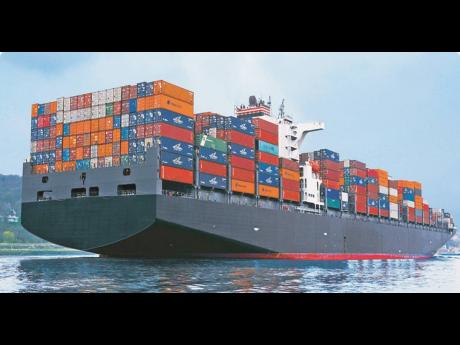Understanding sea freight and its impact on your business – Pt 1
For many businesses, international shipping is the ultimate goal to achieve a larger customer base and increased revenue. However, for that to happen, there must be consideration given to the best way to get their goods delivered into the hands of customers.
For those looking to maximise on cost and get the best possible return, sea or ocean freight is likely the best available option.
Ocean freight is the movement of goods via sea internationally and is overwhelmingly the most popular option, with most of the world’s goods transported this way.
Among ocean transportation, containerised vessels, self-geared vessels, roll on/roll off (RO/RO) ships, bulk vessels and barges are involved in the movement of commercial cargoes, project shipments, bulk freight, personal effects and household goods and turn-key operations, said Beverly Johnson, CEO and managing director of JLB International Limited.
Johnson added that this method provides importers, exporters and intermediaries with the opportunity to transport shipments safely “be it from long distances or short transits”.
According to Mitzie Gordon Burke-Green, managing director of Jamaica Trading Services Limited, the success of ocean freight depends on freight forwarders, who are “experts in coordinating the transportation of cargo from point A to point B across the world on behalf of their client, taking into consideration the various modes of transportation, transportation routes, transit times and costs.”
Ocean freight is perfect for shipping large amounts of goods among nations, but takes more time than if one were to transport packages by air freight.
When considering the use of ocean freight, there are several points to be reviewed.
Ocean freight allows for greater shipping capacity and permits bulk transportation of cargo, particularly those which are large, heavy, and cumbersome to move. This includes, but is not limited to, vehicles, equipment, and industrial or construction materials.
Johnson said, “Today, 90 per cent of world cargoes are transported by ocean carriers via deep-sea or waterways. With the advent of ocean transportation, vessels are designed for specific types of cargoes.”
SEA FREIGHT OPTIONS
Below is a breakdown for the best possible options for businesses and individuals looking to utilise ocean freight as shared by Johnson:
i. Container vessels are designed to transport general cargoes, hazardous and dangerous goods, perishable, temperature control and equipment, in an enclosed and secure intermodal metal or steel framed container space. These containers come in varying sizes.
ii. The self-geared vessels are equipped with onboard cargo-handling systems, (and) can discharge their cargo without shore-based unloading equipment. These self-geared vessels transport dry-bulk commodities such as wheat, coal and iron ore.
iii. Tankships transport bulk liquids such as gases, crude oils, chemicals, and food grade liquids and are discharged directly into bulk liquid receptacles at refineries or in vats.
iv. Ro/Ro ships are designed to carry wheeled cargo such as cars, trucks, semi-trailer trucks, buses, trailers, agricultural machinery and equipment. Ro/Ro allows their consignment to roll on and off the vessel as opposed to being lifted on board using cranes. This means that the destination port operation charges are significantly reduced when this service is utilised.
v. The barge is a flat-bottomed boat built mainly for river and canal movement, to transport heavy machinery and equipment, motorised units, lumber, etc.
Despite its popularity, sea freight has been plagued by several issues over the past two years, primarily driven by the effects of the pandemic. But Johnson said, “Though we are seeing unprecedented increases in ocean freight rates, as much as 47 per cent in the Europe-to-Caribbean markets and 200 per cent to 300 per cent increases in the Asia-to-Europe, North America and the Caribbean markets; ocean freight still remains the most cost-effective means of moving cargoes globally, securely, safely and regularly.”
In the second of this two-part feature, Shipping Industry will explore the benefits and possible drawbacks to consider when contemplating sea freight.

